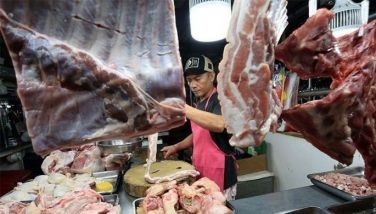Can Asia feed itself?
MANILA, Philippines - Can Asia, the world’s most populous region, feed itself?
For years, this question has nagged Asia as its population continues to burgeon against the grim backdrop of diminishing farmlands, at times aggravated by food price increases as production levels dropped.
The region’s food security landscape, at times, looks foreboding. On the other hand, breakthroughs in research and development (R&D) activities buoy the optimism of leaders tasked with tackling the formidable issue of food security.
In the most recent effort to confront the issue, about 200 food security experts from around the world met recently in Singapore to tackle the challenge of “Feeding Asia in the 2lst Century”.
Occasion was the inaugural International Conference on Asian Food Security (ICAFS) organized by the Centre for Non-Traditional Security Studies at the S. Rajaratnam School of International Studies at Nanyang Technological University in Singapore and the Philippine government-hosted Southeast Asian Ministers of Education Organization-Regional Center for Graduate Study and Research in Agriculture (SEAMEO SEARCA).
The top-level conference drew government representatives, large-scale agricultural producers, farmer groups, researchers, and development partners. The participants produced a draft ICAFS statement on how to best address Asia’s food security challenges.
Key recommendations included pursuing Public-Private Partnerships (PPP) to ensure food availability alongside profitability of food-producing industries, addressing the urgent food insecurity plight of Asia’s most vulnerable populations by improving social safety nets and food distribution, taking pragmatic and concrete efforts to link policies in the food and health sectors, and extending existing foundations to create positive symbiotic relationship between food producers and consumers.
Other suggestions were undertaking sustainable food production strategies and recognizing and responding to shifts in food distribution and marketing that define Asia’s private food sector.
“Our main objective is to ensure that food production and sustainably feed the growing population of Asia, and perhaps have surpluses to provide to other parts of the globe,” stressed SEARCA Director Gil C. Saguiguit Jr.
Based in the University of the Philippines Los Baños (UPLB), SEARCA is one of the 20 “centers of excellence” of SEAMEO, an intergovernment treaty body founded in l965 to foster cooperation among Southeast Asian nations in the fields of education, science, and culture.
Dr. Saguiguit added: “These are tall orders, and they require cooperation among all the stakeholders of the agriculture and food sectors.”
In a statement at the conference, the Southeast Asian graduate education and research administrator focused on two overriding development problems affecting Asia: poverty and food security.
Compounding an already dire situation are the debilitating effects of climate change coupled with a population that continues to outgrow food production in many parts of Asia.
Dr. Saguiguit said: “We must now spin Agriculture’s wheels faster and push its horizons farther than ever before. We take this to mean that we must generate as much production as we can from available resources at our disposal.”
This necessitates the development and use of new technologies, varieties, and production techniques; and optimization of production resources, the SEARCA director pointed out.
At an earlier similar conference billed “Greater Food Security in Asia Through Improved Information Network” held at SEARCA in Los Baños not long ago, it was reported that Asia had been projected to harbor an estimated 578 million undernourished people in 2010.
“While this number is down from the 658 million undernourished in 2009, it is still higher than the numbers reached prior to the food crisis of 2007-2008,” noted Dr. Mercedita Sombilla, manager of SEARCA’s Research and Development department.
She said that Asia still accounts for almost two-thirds of the world’s undernourished and remains 30 percent shy from achieving the Millennium Development Goal l of halving its prevalence.
“Indeed, winning the war on hunger has to take place in this region, which means further improving its food security status,” Dr. Sombilla said in her report on the conference in Los Baños jointly sponsored by SEARCA, University of Hohenheim (Germany), and the Singapore-based S. Rajaratnam School of International Studies of Nanyang Technological University.
However, she added, achieving greater food security has been more elusive in recent years because of emerging trends that put pressure on both supply and demand of food and institutional rigidities, including policy interventions, which affect markets and trade.
“These constraints have to be faced proactively to cushion, perhaps fully eliminate, their negative impacts,” she stressed.
Dr. Sombilla also underscored the need to strengthen the ASEAN Food Security Information System (AFSIS) “to fulfill its vision of becoming a more reliable and effective repository of data and information, generating appropriate indicators to signal food supply and demand imbalances, and providing sound policy guidance to governments toward more sustainable improvement of food and nutrition security in Asia.”
- Latest
- Trending






























